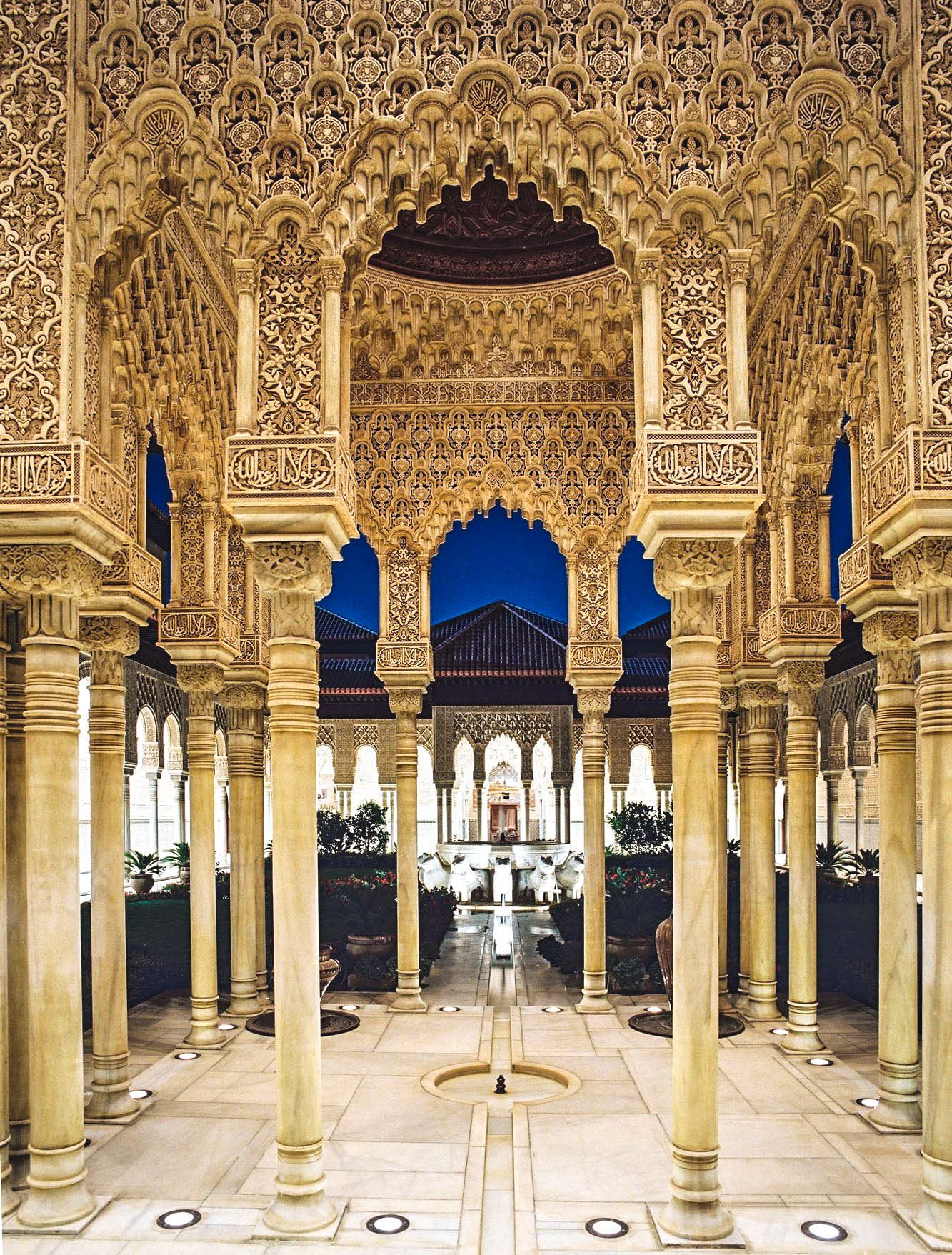 One of the greatest structures built in the
history of architecture is the Alhambra. It is an Arab palace and fortress. It
was at first a Roman fortress that was left untouched for time. It wasn’t until
the Moorish emir Mohammed ben Al-Amir found and renovated the site during the
mid-13th century that it became what it is today. After the Christian
Reconquista in 1492, it became the royal court of Ferdinand and Isabella, which
is also where they endorsed Christopher Columbus for his expeditions. The Alhambra
is also incredibly large in size, housing multiple different structures that
are also quite large themselves.
One of the greatest structures built in the
history of architecture is the Alhambra. It is an Arab palace and fortress. It
was at first a Roman fortress that was left untouched for time. It wasn’t until
the Moorish emir Mohammed ben Al-Amir found and renovated the site during the
mid-13th century that it became what it is today. After the Christian
Reconquista in 1492, it became the royal court of Ferdinand and Isabella, which
is also where they endorsed Christopher Columbus for his expeditions. The Alhambra
is also incredibly large in size, housing multiple different structures that
are also quite large themselves.
There
are multiple main structures forming the Alhambra as a whole. These are the
Royal Complex, the Court of Myrtles, the Hall of Ambassadors, the Court of
Lions, the Hall of the Abencerrajes, and the Generalife.
 There are three main
parts to the Royal Complex: the Mexuar, the Serallo, and the Harem. The Mexuar
is where all of the business and administrational areas are located. The
ceilings and floors are made of dark wood as opposed to the white plaster
walls. The Serallo was built later on during the reign of Yusuf I. This area
contains the Court of Myrtles. This area is highly decorated. The final area is
the Harem, which is also highly decorated. The Court of Myrtles housed a pool
which helped to cool the palace as well as being a symbol of power. The court
is 42m by 22m and has the pool in the centre. The pool is lined with myrtles
and has goldfish in it. There are also galleries on the north and south sides
of the court. The Hall of Ambassadors is the largest room in the Alhambra. In
this room the throne of the sultan is placed opposite the entrance. The Court
of Lions is another courtyard and houses the Fountain of Lions as well. The
court is surrounded by a low gallery that is supported by 124 white marble
columns.
There are three main
parts to the Royal Complex: the Mexuar, the Serallo, and the Harem. The Mexuar
is where all of the business and administrational areas are located. The
ceilings and floors are made of dark wood as opposed to the white plaster
walls. The Serallo was built later on during the reign of Yusuf I. This area
contains the Court of Myrtles. This area is highly decorated. The final area is
the Harem, which is also highly decorated. The Court of Myrtles housed a pool
which helped to cool the palace as well as being a symbol of power. The court
is 42m by 22m and has the pool in the centre. The pool is lined with myrtles
and has goldfish in it. There are also galleries on the north and south sides
of the court. The Hall of Ambassadors is the largest room in the Alhambra. In
this room the throne of the sultan is placed opposite the entrance. The Court
of Lions is another courtyard and houses the Fountain of Lions as well. The
court is surrounded by a low gallery that is supported by 124 white marble
columns.
The Alhambra is an example of what the Arabs left behind with their
conquest of Europe. The things they built with their knowledge and skill are
mirrored by the prosperity they brought to countries like Spain that were
also conquered by the moors.

Works Cited
@alhambradegrana. "Historical Introduction
- Historical Introduction." Alhambra De Granada. N.p., n.d. Web. 30
Oct. 2016.
Irwin, Robert. The Alhambra. Cambridge,
MA: Harvard UP, 2004. Print.
No comments:
Post a Comment